By David Pring-Mill
The following text has been excerpted from Sections 3—3.7 of the Policy2050 report “D2C Strategies in the Personal Care Market, 2021,” in order to serve as a product sample and fulfill Policy2050’s mission “to keep the most socially-relevant insights outside of any paywall.”
This section addresses the myth of more demanding consumers. It explains why D2C brands should set expectations and earn trust, instead of getting caught up in this myth and dread.
D2C is as much about digital communication and customer service as it is about digital ordering and more direct fulfillment.
The best D2C brands proactively set expectations through specific targeting and funnels, encouraged user flows, content marketing that informs/helps first and sells second, and even simple quizzes that determine personalized needs. Then they deliver against these expectations, recognizing that their relevance and growth depends on it.
However, many brands and marketers misperceive the D2C opportunity in a fundamental way. They see a digital front with uphill battles, or a tug-of-war with consumers who are gaining strength, while they’re losing traction. This is reflected in corporate language, especially in the oft-cited “more demanding consumers” phrase.
There’s a business risk in conflating “demanding consumers” with “consumer demand” or “increased competition.” They’re actually very different concepts, and appreciating these differences will lead to more precise business strategies.
Consumer demand, of course, is the willingness and ability of consumers to purchase goods at the current time and prices. The intersection of supply and demand is one of the most well-known economic principles, on which markets operate.
The idea of “more demanding” consumers suggests that products and practices must be improved to meet subjective standards that are continually climbing higher.
“Increased competition” leads to attempts at differentiation. This varied landscape is often the result of lowered barriers to entry, but it could be falsely attributed to more demanding consumers, or increased consumer demand. Oftentimes, many of the new brands are struggling, in spite of their differentiating product features or claims. Fortunately for them, they invested much less than what was previously required.
Why have basic strategic imperatives become overcomplicated? Why is this “demanding consumers” phrase so pervasive?
While the modern consumer is certainly more empowered, they are very frequently characterized as more demanding in industry literature. This belies the fundamental nature of the dynamic, upon which brands are hoping to build subscription-based “relationships.”
Throughout blogs and whitepapers, from companies and their marketing agencies, there is reference after reference to this idea of more demanding consumers driving change.
To interpret this indiscriminately used or exaggerated lingo in a literal way, what quality of a relationship might we expect to form between two parties, if one considers the other to be increasingly demanding?
The more real and reasonable consumer has needs or wants, as well as emotional needs disguised as wants, and limited dollars in an increasingly precarious or at least uncertain economic situation. They want the assurance of value, delivered value, and a remedy in the form of a frictionless return process if value isn’t delivered. In other words, a fair transaction.
Whereas in the past, they might have grabbed an item off the shelf based on some guesswork, a comparison of their needs against product features mentioned on the packaging, and/or a conversation with a potentially commission-driven retail sales associate, they can now deep research their options digitally. They have a powerful tool for this (smartphones) already in their pockets. This effectively allows them to compare their needs against the experiences of other people who already bought the product, as opposed to the packaging copy.
This isn’t consumers becoming more “demanding.” It’s a significant reduction of information asymmetry, and a massive expansion of choices, potentially resulting in an improved alignment between sellers and buyers.
“Demanding” suggests that consumers are authoritatively or arbitrarily setting high standards, when to some extent, it’s simply more difficult to cheat or mislead them.
Even high return rates of fashion apparel in ecommerce channels partly reflect the difficulty of digitally communicating sizing information, though tech solutions for this are on the horizon.
In some respects, it’s harder to do bad business when established platforms and information sources are leveraged, which is good for business.
Everyone is operating off a new baseline of brand accountability and process consistency, which invites more frequent digital transactions. Faster delivery expectations are a reflection of increased competition and optimized logistics.
However, when those logistics fail, supply chain issues arise, or budget cuts are inflicted on the post office, consumers’ frustrations may transfer over onto the brand. This is perhaps the most legitimate characterization of more demanding consumers but even this can be mitigated through the proactive setting of expectations and well-crafted communications.
To apply some other caveats:
This is not to suggest that overly demanding consumers do not exist. They do, and their demands have real costs attached. Some even look for ways to cheat the system, and do so at an incredible cost, as outlined in the retail section of the Policy2050 report “D2C and Other Digital Adaptations During COVID-19.”
But these people aren’t necessarily the true drivers of change in a particular market, or the drivers of D2C channel adoption.
The most profound category changes will arise from innovating and solving for needs and wants in unexpected ways, which is antithetical to catering to the demanding consumers who are being particular about an existing product.
Value is, of course, subjectively perceived but it’s largely based on expectations, and it’s the responsibility of the brand or retailer to proactively and accurately set those expectations.
In personal care and beauty categories, the collective force of media and culture is also defining, redefining, and cycling trends to a large extent, which informs needs/wants/emotional needs disguised as wants. This introduces an additional party to the setting of expectations and, arguably, an additional layer of abstraction.
Pitching simplicity
Many of the outstanding D2C brands have achieved their success by being straightforward with their customers and acknowledging that their needs are not actually that complex. Rather, complexity was previously entrenched in the traditional business process, and the average consumer was at least vaguely aware of this.
These D2C brands’ unique value proposition is that they’re unrooting some of that complexity. This is especially evident in the personal care market.
The original Dollar Shave Club video, which is now iconic in the D2C world with over 27 million YouTube views, began by immediately and concisely explaining the value proposition, which was already spelled out in the brand name: “for a dollar a month, we send high-quality razors right to your door.”
But the brand went further, by criticizing the needless complexity that had come to drive and define the category on brick-and-mortar shelf space. Later, they even satirized the locked retail cases.
“And do you think your razor needs a vibrating handle, a flashlight, a back scratcher, and ten blades? Your handsome ass grandfather had one blade, and polio,” said founder Michael Dubin in the original video, with comic timing that he likely developed, at an earlier age, as part of a sketch group. Suggesting that greater value could be derived through greater simplicity, he added, “Stop paying for shave tech you don’t need. And stop forgetting to buy your blades every month.”
Public Goods, a D2C brand largely in personal care as well as other consumer packaged goods, also gained its following by shining a light on the complexities of traditional retail supply chains. Their pitch was also, essentially, consumer value derived through the removal of complexity. Even their packaging consists of plain black text against white backgrounds, with the name of the commodity and the quantity listed as ounces or fluid ounces.
In the Public Goods Kickstarter video, founder Morgan Hirsch said that the average household was spending $6,000 a year on household goods, and $8,000 if they happened to go for “the healthy, natural stuff.” Hirsch said, “The thing is, these things don’t actually cost a lot to make. It’s the supply chain that’s the problem.”
Morgan Hirsch transitioned into a whiteboard example, with simple animations, that showed a bottle of shampoo going from a factory, to a brand, to a distributor, to a retailer, and then finally to the consumer, with the price tag increasing along the way.

In practice, the Public Goods D2C alternative comes with its own complications. Hirsch told Forbes in 2018 that their customer acquisition cost (CAC) was $50. They also use a membership model, which their FAQ positions as their method of bypassing multiple suppliers and delivering “the highest quality at a minimal margin.”
Hirsch pitches all of this as Costco meets Trader Joe’s.
Dollar Shave Club similarly pulled back the curtain on big brand marketing and the costs passed onto consumers. In his original video, Dubin asked, “And do you like spending 20 dollars a month on brand new razors? 19 go to Roger Federer!” This was a reference to a Gillette campaign featuring the tennis star at the time.
“I’m good at tennis,” Dubin added, while catching a racket, swinging at an incoming tennis ball without looking, and missing, with his disruptive confidence completely undeterred.
The observation that “CAC is the new rent” has come to define the reality of some of these attempts at complexity/cost reduction.
Retention also became a topic of strong interest during the pandemic.
At any rate, it’s clear that pitching simplicity, even if it’s only theoretical simplicity, has resonated with consumers. And this would appear to contradict the idea that consumers are more demanding, unless we are saying that consumers are more demanding of simplicity.
In a D2C agency-organized, CRO-focused panel that included the founder of Snow Teeth Whitening, the founder of SmoothieBox, Vinny McCauley, commented that he had gleaned valuable insights from the CX Live P:ep Show. “And one of the best sort of learnings that I’ve ever had is that a confused mind can’t convert,” he said.
“And so all of our conversion work, all of our conversion strategy is really revolving around: where are we introducing confusion into our sales funnel?”
Here again, a D2C disruptor has seen measurable results from simple and clear expectation-setting.
Illuminating history
If consumers are more demanding today, then they were always more demanding, and they’re on a centuries-long trajectory towards becoming insufferable. One wonders why all business owners haven’t resigned from capitalism!
The personal care market provided a foundation for the development of D2C business models, as it did historically with mail order. Back then, many brands’ attempts at consumer persuasion were remarkably similar.
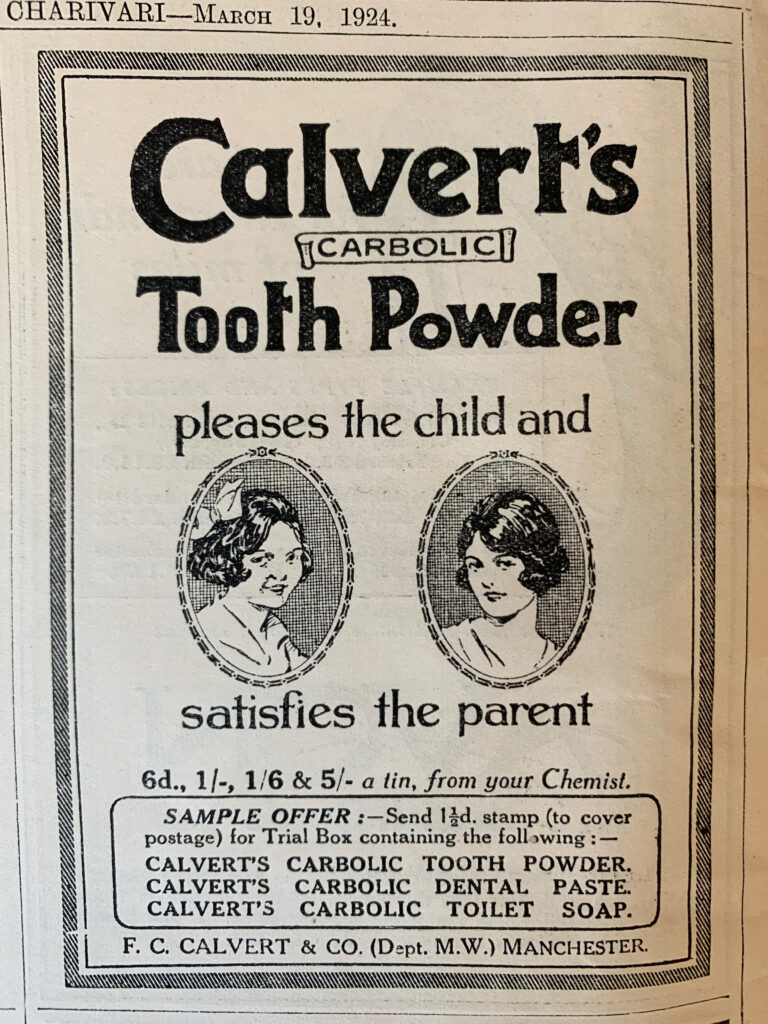
Trial boxes were sometimes freely provided by personal care brands to any consumers expressing interest via stamped envelope. These businesses were essentially betting on customer lifetime value, similar to how D2C personal care brands now promote discounted bundles or starter kits through paid social, even though this may leave them with little or no margin in the near-term. See a Calvert’s 1924 ad, included here, for the historical precedent.
Another 1924 ad from Palmolive, which is of course still operational today as Colgate-Palmolive, bears similarities to D2C marketing. Palmolive claimed that its shaving cream product was the subject of much buzz and social credibility, before such sentiments could be openly shared and precisely quantified on digital platforms: “countless men have written their amazement that one creation could so excel the rest,” “the result has been a sensation,” etc.
The same ad tells a brand story that is very familiar in the modern world of D2C. Palmolive announced that it had surveyed over 1,000 men and tested 130 formulas over the course of 18 months, in order to redefine the shaving cream category and leverage its trusted global brand in toilet soap.
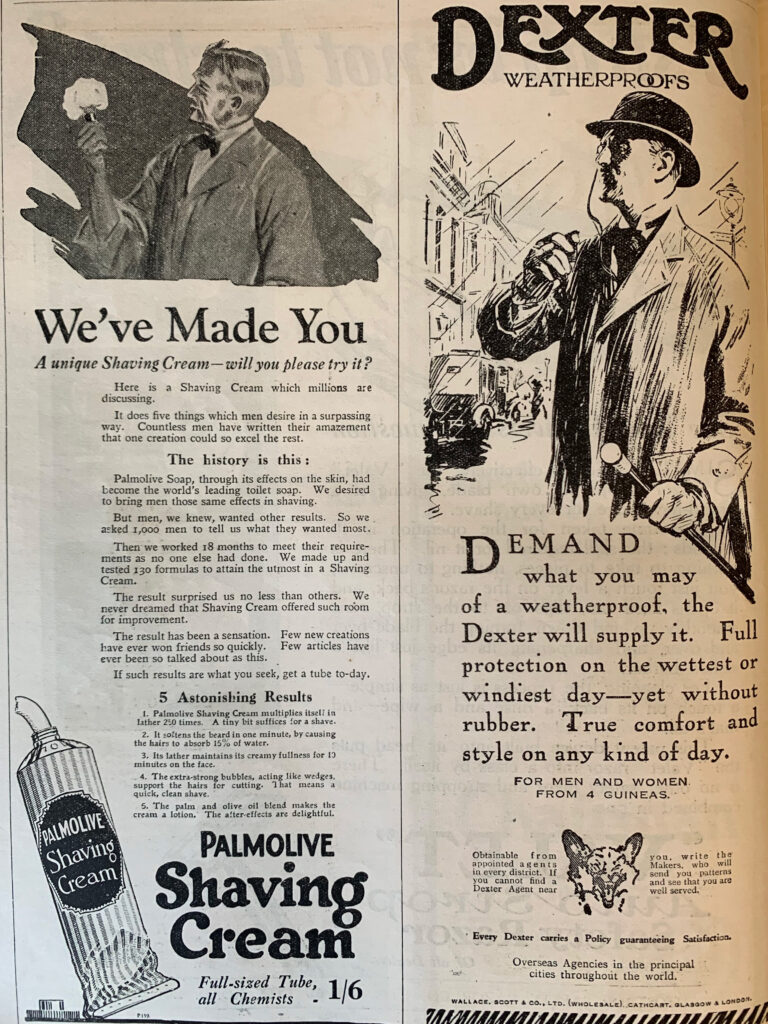
They may not have been able to use social likes or follows to quantitatively support their claim that they could meet men’s shaving requirements as no one else had done, but they did suggest that “Palmolive Shaving Cream multiplies itself in lather 250 times,” increasing the value, and it “softens the beard in one minute, by causing the hairs to absorb 15% of water,” presumably saving time. Furthermore, this lather was said to maintain its creamy fullness for 10 minutes.
Adjacent to this Palmolive ad, another ad for a coat promises to meet any conceivable “demand” for a weatherproof coat. Historical photos of this wholesaler have preserved an indicator of their corporate culture. Within a red brick and ashlar-clad factory, there’s a sign hanging over the workers’ heads, with the text: “DO IT BETTER.”
Flipping through nearly century-old personal care ads in publications from that era, it becomes apparent that marketers have long viewed, or at least depicted, consumers as demanding. They scripted compelling narratives about how their brands approached personal care categories in ways that were generally better, more innovative, and more personalized to the needs of specific consumer segments.
In fact, manufacturers sent razor blades directly to consumers long before the arrival of Dollar Shave Club.
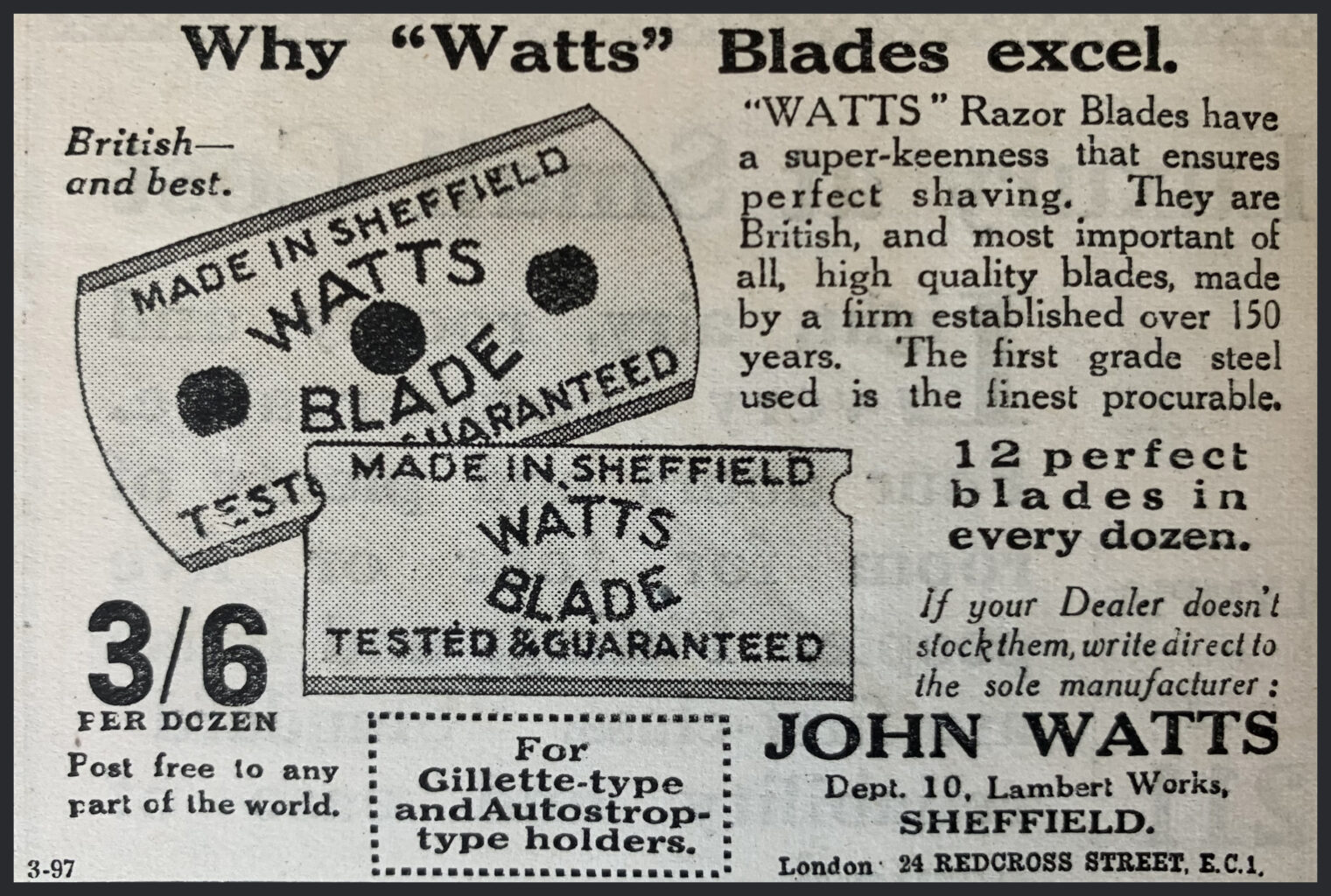
The personal care businesses of the past were, of course, more technologically restricted in their pursuits, and they were typically more verbose in their marketing. However, the fundamental business premise or narrative hasn’t changed: consumers are more demanding, so we must do it better.
The difference is that “more demanding” consumers are now cited as justifications for increased expenditures, technological integrations, and feature creep (in B2B tech and in the consumer product itself). And in multiple categories, including personal care, consumers are clearly expressing strong interest in products that are going back to the basics, which would almost seem to suggest that they’re less demanding.
When mail order catalogues, a clear precedent for ecommerce and D2C, first emerged, they were singing the same tune. The Littlewoods catalogue, originally published in 1932, promised “to help the homely folk of this country” by enabling them “to obtain some of the profits made by manufacturing and trading… to save money on things they must have.”
That sounds a lot like the Kickstarter video for Public Goods.
Hawthorne, another D2C men’s grooming brand, is also extending the reach of the category, as mail order once did, with 40% of its customers located in rural areas and 75% in middle America.
A small D2C personal care brand in India, Yayy! Naturals, decided to eschew premium pricing so that it could expand its reach.
Co-founder Ashutosh Singh told SMB Story: “Brands that call themselves premium get false positives in the initial phase when they get orders from metro cities like New Delhi and Mumbai. They face problems when they want to scale because the purchasing power in India is low.”
History doesn’t repeat itself but it rhymes.
J.C. Penney started in brick-and-mortar and later entered the mail order catalogue business through acquisition in order to compete with the mail order success of Sears, Roebuck and Co. and Montgomery Ward & Co., mirroring the way that modern retailers have built up their ecommerce sites in the wake of Amazon’s disruption, and the way that big CPG multinationals have acquired disruptive D2C brands.
When we look internationally as well as historically, we can observe that in developing market economies where ecommerce is being introduced or growing rapidly, consumer rights, secure payment systems, established liabilities, and reliable distribution are seen as necessary pillars to sustain digital economies.
This again serves as a reminder that, at the core of it all, brands experience ecommerce and D2C success by meeting needs and wants through fair and frictionless transactions.
Internal considerations
Very often, the demanding consumer is conceptualized merely to establish a sense of stakes and then propose a B2B solution, or to justify an undertaking to investors or higher-ups.
At the same time, suggesting that the increasingly demanding consumer is the driver of D2C/ecommerce evolutions can have drawbacks. It’s a somewhat Sisyphean scenario to present to a D2C startup or D2C/ecom department within a larger consumer goods company, as it implies that their work may never be up to par.
This might even be a way of lamenting the increased accountability that comes with online reviews, social media, and subscription churn. It might be a way of justifying disappointing sales figures and the disruptions of rivals, e.g. “we tried to serve those customers, but they were too demanding.”
There are demanding customers individually but dismissing entire markets as such suggests some flaw in the internal perspective. It even sounds a little absurd.
If a team instead acknowledges “better alignment” as the true driver of D2C/ecommerce evolutions and orients around that, then it’s actually possible to take actions and be accountable to results.
For example: “This customer complained that our electric toothbrush runs on AAA batteries, instead of using a recharging base with a USB wall charger. Did we disclose that on the product page? Why doesn’t it run on a wall charger? Is our price significantly lower to justify this inconvenience?” Or, perhaps, “Are we in the AAA battery business?” (Just kidding.)
If market research reveals that consumers are content with the electric toothbrushes they already have but are irked by reordering the toothbrush heads, “better alignment” might look like a D2C subscription service around that specific need.
Colgate is even experimenting with a toothbrush that isn’t electric but has replaceable brush heads nevertheless. This is being positioned as a way to “stop throwing plastic into landfills without sacrificing a healthy smile.”
The particulars around shipments, in practice, might detract from the merits of sustainability claims. But what this demonstrates on a fundamental level is the corporate awareness that product re-engineering can be linked to the re-engineering of business models, by essentially re-engineering consumer behaviors.
Crowded categories
Currently, searching for an electric toothbrush in the beauty and personal care section of Amazon turns up over 2,000 results. This is essentially an unnavigable variety of product lines, models, components, and accessories from dominant players and unfamiliar brands alike.
Explaining that sheer quantity of electric toothbrushes would be a separate topic altogether, as it reflects the lowered barriers to entry, the state of global manufacturing, trade policies, etc. Suffice it to say, this product differentiation is attributable to the more empowered competitor, as opposed to the more demanding (also empowered) consumer.
It’s important to recognize here that consumers didn’t demand 2,000 electric toothbrush options with gratuitous or technical features that are only loosely connected to a value-add. To the contrary, this leads to a paradox of choice. It might increase their dependence on the algorithms of ecommerce leaders and search engines that earn trust, essentially, through the elimination of less pertinent choices, only to then monetize and perhaps even undermine that trust through sponsored results.
Consumers want brands to digitally present something that they might be in-market for, say what the product is and isn’t, and deliver something that matches the expectation being set.
They want that predictability, consistency, and integrity, in part, because it means that they can commit to recurring business and avoid having to look at 2,000 toothbrushes, which no one wants to do, or ever will do. (The Guinness World Records is on standby, if anyone interprets this as a challenge.)
If a brand’s follow-through matches the expectations that it sets, consumers will be more likely to assume that this brand will consistently deliver against the expectations it sets in other personal care categories, as well.
A Deloitte paper that repeatedly refers to the concept of demanding consumers states: “A more demanding consumer is harder to convince, and in a more competitive market will be enticed by the wide choice available to him or her.”
And yet, the typical Amazon shopper likely ignores the vast majority of the 2,000 electric toothbrush results, instead applying a needs-based, utilitarian lens on functionality, while factoring in the price, and gauging trustworthiness through the ratings, reviews, and brand.
More than two-thirds of consumers cited Prime eligibility as an important factor in a Feedvisor survey.
A Feedvisor survey of brands showed that 98% see business value in Amazon advertising, with 54% characterizing it as “a great deal of value.”
One possible interpretation here is that consumers are selecting Prime because they want to receive their goods quickly, just as they would if they went to the store. The brands are buying Amazon ads because they’re trying to capture the attention of consumers who are actually very busy and overwhelmed by choice, not enticed by it.
Some of the most successful new D2C personal care brands have been able to disrupt the industry by acknowledging the scarcity of attention, the paradox of choice, and the resulting confusion, and then positioning their brands as sources of simplicity, clarity, and transparency.
Hims & Hers, discussed later in this report, positions itself as a customer-centric telemedicine and personal care platform offering greater choice, control, and transparency, in an industry that has “never been built with the consumer in mind.”
When describing the brand’s strategies, co-founder Hilary Coles has noted that they’re trying to make healthcare and personal care fit better with the overall landscape of essentially on-demand digital services, but she has also said that they’re seeing results by deliberately, psychologically empowering consumers.
In many cases, Hims & Hers is succeeding by creating the path of least resistance to treatments that people, and especially men, need but might not readily admit that they need, due to embarrassment, an inconvenient process, and an unwillingness to confront the issue.
In other words, the right business strategy is less about meeting the expectations of more demanding customers, and more about creating encouragement or reducing resistance in order to exploit pent-up consumer demand.
Identifying needs; when less is more
When Ju Rhyu, co-founder and CEO of Hero Cosmetics, was asked why she thought there was a U.S. business case for acne patches from the Korean market, she replied, “It solved a real problem that I was struggling with. It worked better than anything else I had ever really used and I just got to thinking if this is helping me, this could probably help a lot of other people stateside as well.”
When entrepreneur Tom Shipley realized that his skincare startup Hydroxatone was commercially viable but unlikely to become a category king, due to fierce competition in the crowded space, he created a new brand called Keranique in the underserved women’s hair loss category. Shipley had noticed that his mom and sister had experienced problems with hair loss.
When Harry’s launched a scalp care line in Walmart and D2C called Headquarters, they sought to reframe the way that women view the haircare category by making them more focused on the needs of their roots and scalps, and reminding or informing them that their visible hair doesn’t contain living cells.
Gabby Etrog Cohen, Global Head of Integrated Marketing, told The Consumer VC: “That was like a real pain point that we were solving for; for so many women, who don’t realize that your hair is actually dead, and you’ve been taking care of something that’s been dead for a really long time, where it’s really around starting at the root in the scalp.”
All of these disruptive personal care brands are finding meaningful customer bases digitally, but they began the old-fashioned way: by identifying needs.
Through copy and images, it’s immediately evident that Hero Cosmetics is about combating pimples and blemishes; Keranique is about women’s hair regrowth; Headquarters is about changing the standard haircare approach. They’re problem-solvers.
Even before the increased familiarity with D2C resulting from the pandemic, consumers were looking directly to brands to set their expectations.
In 2017, Astound Commerce found that 65% of consumers were using brand manufacturers’ websites to research their products, even though they preferred to purchase through an online retailer.
59% reported that they used the brand manufacturer’s website for research and usually purchased there as well.
Setting expectations digitally isn’t just about the disclosure of information. It’s about the whittling down of information and options based on needs.
When BeautyBio, a skincare startup with funding from middle market private equity firm Kainos Capital LP, added a simple quiz to its website that determines skin type, they increased average order value (AOV) dramatically, by 28%.
Their “virtual consultation” is actually only a few questions, powered by a custom quiz building Shopify plug-in. It asks prospects to identify their skin type (normal, dry, oily, or combination), skincare goals, and their level of time commitment/interest.
Hawthorne also prominently features a quiz on its website and has introduced additional questions along with their expansions into adjacent categories. However, they also personalize their products to an extreme and possibly unnecessary degree, with 50,000 possible product formulations based on the 7 core hair types identified by the brand. They claim that their algorithmic approach has an accuracy rate of 97%, and that their product return rate has dropped from 17% in 2016 to less than 1% in 2019.
Some D2C brands have actually found that it’s better to gradually adjust or personalize because introducing too many questions upfront places too high demands on limited attention, before loyalty has even been earned.
Either way, it’s clear that new digital strategies can sometimes help with better alignment. But brands must also be prepared to abandon some of their outdated strategies.
For example, many pricing and packaging strategies can be traced back to the information asymmetry that used to define the relationship between shoppers and shelf space.
Even the saying “you get what you pay for” evolved out of retail-based assumptions that a higher price tag indicated higher quality and rational underlying market mechanisms, as opposed to premium pricing strategies that were actively exploiting this sometimes false assumption.
Many of these conditions have fundamentally changed. For well over two decades now, the lack of information has been replaced by an abundance, even a bombardment, of product information.
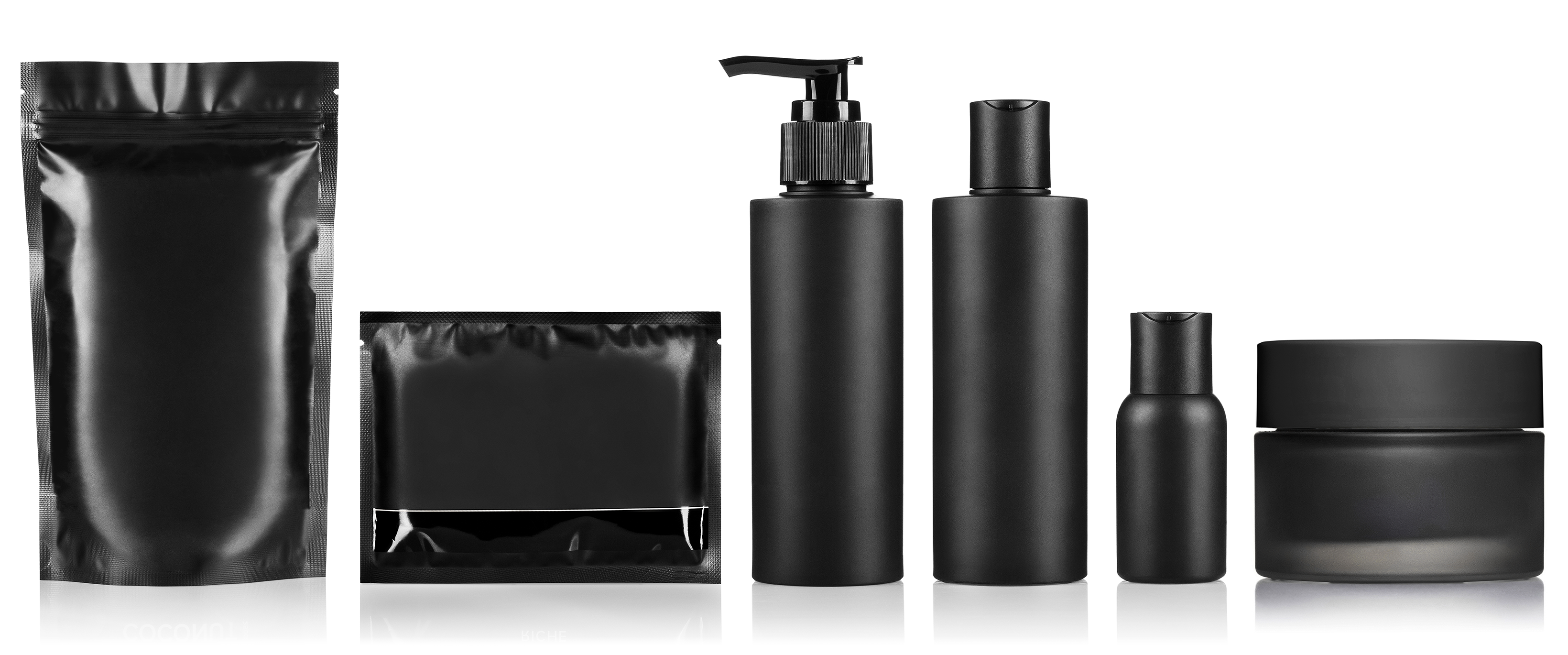
Today, online reviews offer quick insights into the actual product quality.
Layering on gratuitous product features was also once a logical way to stand out on the brick-and-mortar shelf space, where it wasn’t possible to target specific consumer segments (except by retailer, and aisle).
Today, the new, virtual shelfspace includes literally countless products, and it can essentially be customized based on purchase intent, history, and more psychographic, less obvious data.
Many ingredients have primarily been a way of staying on that shelf space for longer.
Today, goods can get to consumers much faster and fresher.
Customization, in this new virtual shelfspace, doesn’t necessarily require the addition of product features. It often involves the subtraction of features, or ingredients, and a more minimalist brand design.
Less is more…
There’s even a new consumer trend that replaces face wash with olive oil, cleansers with honey, and toners with apple cider vinegar and rose water. The idea of using oil to treat oily skin may sound counterintuitive but for some people, it seems to be effective.
If the possibility of cooking oil products unseating heavily-marketed products in the personal care aisle sounds implausible, consider that apple cider vinegar (or “ACV,” as it’s often called online) has already claimed shelf space in retailers’ pharmaceutical sections.
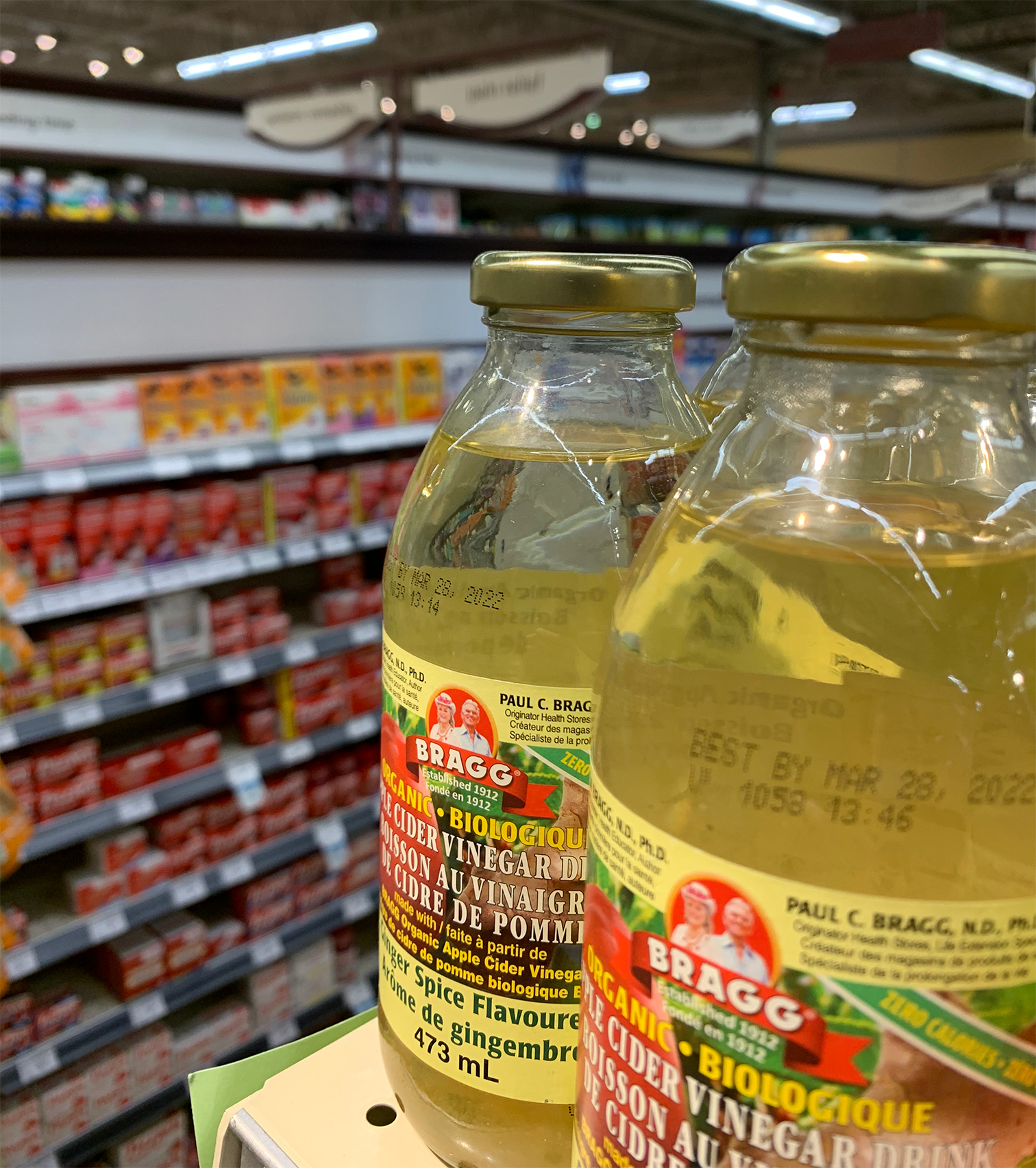
Bragg Live Food Products, Inc., a longtime market leader in apple cider vinegar, was acquired by an investor group in 2019, which likely contributed to this repositioning.
Consumers are scaling back in terms of formulations.
There’s also a purely aesthetic, design-based cleanness to many new products that better matches consumers’ lifestyle goals to “eat clean,” reduce clutter, and prioritize active experiences. A desirable promotional offer might finalize the conversion process.
Are these “demands”? Is simplicity demanding?
Perhaps this consumer interest is best characterized as changing needs and wants.
Although specific trends around superfoods and active ingredients often change very rapidly (and with significant implications for supply chains), the market impact of health/wellbeing-centric lifestyle aspirations has been evident for decades now. If brands still consider this underlying shift to be “demanding,” they were either unobservant or organizationally resistant.
As the Smithsonian Magazine has documented: “In 2002, the USDA released its national standards for organic products, officially bringing the movement into the mainstream.”
Now, during a global pandemic, health/wellness categories are predictably surging, and products that seem unrelated to health/wellness are trying to position themselves as a part of the ideal, healthy lifestyle.
These lifestyle aspirations also deprioritize ownership, especially for younger generations, which has relevance for D2C brands offering subscription services.
Zuora, which provides B2B, cloud-based subscription software, conducted a pre-COVID online survey of international consumers. Their analysis of these survey results concluded that “consumers around the world are increasingly demanding fluid services over static products,” but they were doing so under the belief that product ownership, essentially, demanded something of them.
70% of adults agreed that subscribing to products and services freed them from the burdens of ownership, such as maintenance, clutter, and declining value.
68% rejected the idea that their status was defined by what they owned.
When applying this lens to it, are these consumers more demanding, or in some ways, less?
Looking at the product titles of some of the 2,000 Amazon listings for electric toothbrushes, it’s easy to glean all the product feature innovations and modifications aimed at accommodating the “demanding” modern consumer: bristle softness, battery life, modes, timers, charging stations, travel cases, “floss action,” “cross action,” “advanced magnetic levitation motor tech” specifically intended for children, etc.
Some of these features account for real, individualized needs but the overall impression is clearly one of companies throwing everything against the wall (or ecommerce platform, rather) to see if it sticks.
They’re either orienting around the capricious, unpredictable consumers, who do exist but aren’t the true drivers of digital adoption, or they’re paying too much attention to the competitive clutter.
Instead, they could be working to build clear, decisive, and accountable D2C brands, with funnels and flows that identify real needs, segment based on those needs, set expectations, and then deliver against those expectations. That way, their products will be viewed as relevant, not as clutter.
Innovating to the point of parody
An awareness of the product adoption curve helps incumbents to reduce the risk of losing relevance or being blind to the next thing, but it’s also risky to conflate early adopters of needs-driven innovations with an overly demanding minority of buyers.
The reasonable consumers, who drive volume and even provide the conceptual foundation of FTC regulations, view brands’ attempts to accommodate nonexistent demands as confusing, or even comical.
In the past, R&D in the men’s razor category has been the subject of multiple parodies.
A MADtv sketch showed a man with a five o’clock shadow, verbalizing his desire to get a close enough shave in order to look like a “first-rate professional businessman.” Lamenting the inadequacy of triple blade razors, he turns to the Mach 20 razor. An animated commercial, resembling Gillette campaigns that aired at the time, then shows 20 blades consecutively taking their turn against a hair follicle, eventually shaving off layers of flesh.
A similar sketch from Australia’s The Late Show suggested that the different, excessive blades were each engaged in elaborate tactical maneuvers, aimed at tricking and apprehending the hair follicle. The narrator of this sketch concludes, “For the smoothest and most ludicrously convoluted shave every time, ask for the Gillette 3000.”
Philips made the same joke in its actual commercial. After a booming male voice introduces the fictitious 15-blade “Quintippio,” a less intense narrator interrupts, “Everyone’s talking more blades; we’re talking less irritation.” Ironically, their proposed solution carries its own form of complexity — injectable cartridges of Nivea for men lotion.
The first episode of Saturday Night Live skewered the idea of a three-bladed razor, at a time when Gillette was still in its Trac II iteration. Parody became reality.
Ecommerce and D2C didn’t inspire consumers to demand even more blades. To the contrary, new offerings like The Dollar Shave Club gained market share through their refreshingly straightforward marketing and D2C business models.
When Procter & Gamble Co. settled its lawsuit against Unilever’s Dollar Shave Club and two other companies for allegedly infringing upon Gillette’s patented technology, a spokeswoman commented, “It is easy to poke fun at innovation in this category, but innovation has been a crucial element at improving the shaving experience for consumers for over a century.”
Key takeaways
- The personal care market provided a foundation for the development of D2C business models, as it did historically with mail order. Back then, many brands’ attempts at consumer persuasion were remarkably similar.
- Everyone is now operating off a new baseline of brand accountability and process consistency, which significantly reduces information asymmetry and invites more frequent digital transactions.
- The best D2C personal care brands proactively set expectations through specific targeting and funnels, encouraged user flows, content marketing that informs/helps first and sells second, and even simple quizzes that determine personalized needs. Then they deliver against these expectations, recognizing that their relevance and growth depends on it.
- There’s a business risk in conflating “demanding consumers” with “consumer demand” or “increased competition.” They’re actually very different concepts, and appreciating these differences will lead to more precise business strategies. Very often, the demanding consumer is conceptualized merely to establish a sense of stakes and then propose a B2B solution, or to justify an undertaking to investors or higher-ups.
- New D2C personal care brands are identifying needs first, which often causes them to streamline processes, reduce features/ingredients, and market their brands in more straightforward, compelling ways. These brands acknowledge the scarcity of attention, the paradox of choice, and the resulting confusion, and then position themselves as sources of simplicity, clarity, and transparency.
- If there’s embarrassment or stigma around particular categories, the right business strategy is less about meeting the expectations of more demanding customers, and more about creating encouragement or reducing resistance in order to exploit pent-up consumer demand.
- The observation that “CAC is the new rent” has come to define the reality of some of these attempts at complexity/cost reduction. But it’s clear that pitching simplicity, even if it’s only theoretical simplicity, has resonated with consumers. As one D2C founder phrased it: “a confused mind can’t convert.”
The full report “D2C Strategies in the Personal Care Market, 2021” is now available for purchase on Policy2050.com.